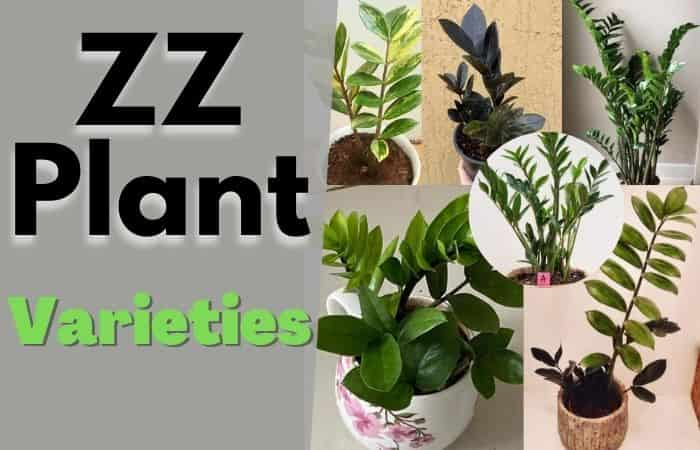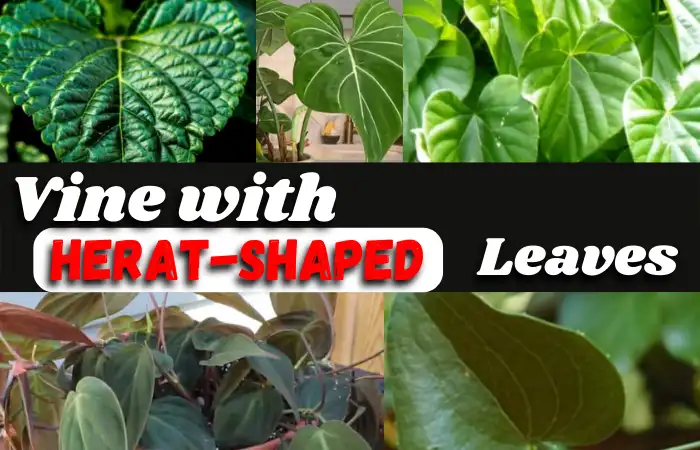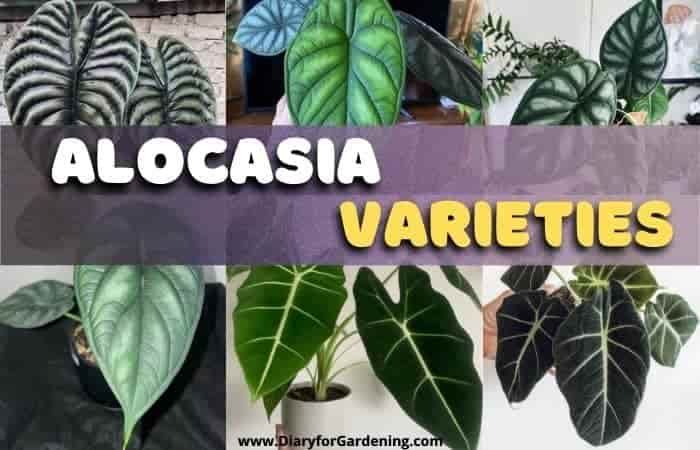12 amazing plants with 5 leaves per stem- [with pictures]
Are you searching for a plant consisting of 5 leaflets at a stalk?
Finding such a leaf of five leaflets is a tough job as most of the trees around us exhibit single leaves. But the diversified tree species dispersed around us grow many trees that include these characteristics.
The five-leaved plants are always at a leading position in the list of ornamental trees for their unique arrangement. Again, some of them also have medicinal values which are important for your health consciousness.
That’s why you should know about some of the trees which hold such leaves. In this case, we have brought some tree species that will enchant your mind and serve you in various aspects.
How 5 leaflets arranged in a stalk?
This is a mechanism of attaching 5 parts of a leaf at a common point. The leaflets are parts of a single leaf that is attached to a petiole. The leaflets may have stalks in their lower portion. Some tree species may lack stalks that are directly attached to the leaf stalk.
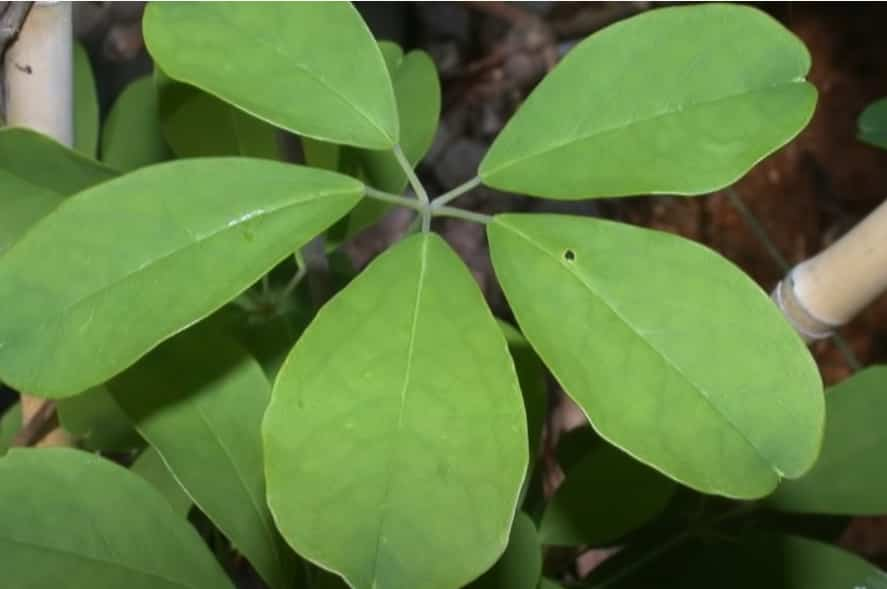
They are arranged in a whorled order and the leaflets are arranged one after one. The leaflets remain almost the same size. This whole arrangement looks like five fingers of a hand.
Plant with 5 leaves per leafstalk
Among the various divergences in the tree species, the plants having 5 leaves per stem attract people more than other plants. Hence, we have brought detailed information about some of these plants.
- Virginia creeper
- Five leaf akebia(akebia quinata)
- Ivory prince helleborus
- Parthenocissus Vitaceae
- Eleutherococcus sieboldianus
- Cinquefoil
- Purslane
- Pachira Aquatica
- Lagundi (Vitex negundo)
- Casimiroa edulis
- Bombay plant
- Alstonia Angustifolia
1. Virginia Creeper
At the top of our list, we have Parthenocissus quinquefolia, commonly known as Virginia creeper, Victoria creeper, five-finger, five-leaved ivies etc., which are the most common species of the five-leaved stem family. Though this tree is native to central North America, Canada, Mexico and Guatemala, it is widely found in all the countries all over the world. Let’s have some more specs from below-
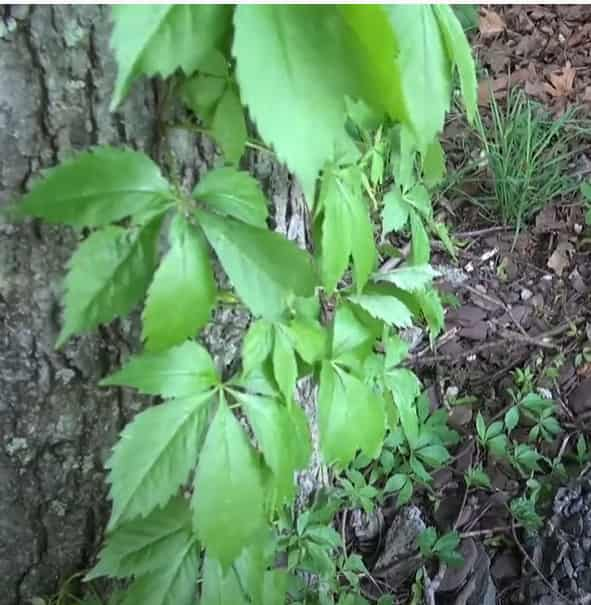
Specifications
- Family- Vitaceae
- Plant type- Deciduous climber
- Plant height- 20-30 m(70-100ft)
- Leaves- Palmately compound leaves. Five leaflets come from a common stalk and vary from 3 to 20 cm.
- Stem- Climb through tendrils
- Flower- Greenish small flower produced in clusters.
- Fruit- Purplish-black Berries
- Flowering time- Late spring to late summer
- Propagation- By stem cutting
- Uses-
- As ornamental plants
- Covering telephone poles
- Shading vines for buildings
2. Akebia quinata
Next, Akebia quinata is a plant native to Japan, China and Korea which is also known as the Chocolate vine, Five-leaf akebia, Five leaf chocolate vine etc. You can often find it on the mountainous slope or hills. To provide more information about this plant, we would like to point out its characteristics.

Specifications
- Family- Lardizabalaceae
- Plant type- climbing evergreen shrub
- Plant height- 10 m(30 ft)
- Leaves- Palmately compound leaves. Five leaflets with obovate or elliptical leaves
- Stem- greyish brown with lenticels
- Flower- Chocolate scented with 3 or 4 sepals clustered in a raceme
- Fruit- Pods Looks sausage-shaped and contain pulp
- Seed- Sweet fragrance and surrounded with pulp
- Propagation- By stem cutting
- Uses-
- Used as seasonal fruit
- Has a diuretic action
- Can treat urinary infections.
3. Ivory Prince Helleborus
After that, as a breed variety, the Walhelivor or Ivory Prince Helleborus or Christmas Rose has extra specialties that can attract everyone. Like the flowers, the leaves of this plant are also five attached as they produce leaflets. This rose species is now cultivated in a wide range all over the world. Scroll down to get extra information about this plant.

Specifications
- Family- Ranunculaceae
- Plant type- Perennial shrub
- Plant height- 12 to 18 inches
- Leaves- Palmately compound leaves with bluish-green color having the serrated margin
- Flower- White cream flowers.
- Seed- Produced inside the flower.
- Flowering time- February to March
- Propagation- By stem cutting or mainly tissue culture.
- Uses-
- Used for decorative purposes
Popular & Rare ZZ plant varieties with pictures.
4. Parthenocissus Vitaceae
Have you heard about thicket creeper or false Virginia creeper? Scientifically, they are introduced as the Parthenocissus Vitaceae plant which is also known as woodbine or grape woodbine. Native to North America, it is introduced in Europe as well as in the whole world. It is also called Parthenocissus inserta. Now, we will know about their other parts.

Specifications
- Family- Vitaceae
- Plant type- Climbing and sprawling woody vine
- Plant height- 20 m
- Leaves- Palmately compound leaves. Five leaflets come from a common stalk and they are around 13 cm long and 7 cm wide.
- Stem- Climbing tendrils but cannot climb smooth walls.
- Flower- Greenish small flower produced in clusters.
- Fruit- Blueberries
- Flowering time- Late spring to late summer
- Propagation- By stem cutting
5. Eleutherococcus sieboldianus
The five-fingered Aralia or five-leaf Aralia is scientifically known as Eleutherococcus sieboldianus. It originated in the Anhui province of China. It is now widely found in Japan, USA and Korea as it is adaptable in any kind of soil as well as full sunshine or full shady places. Get some silvan characteristics of this tree species.

Specifications
- Family- Araliaceae
- Plant type- Suckering and upright ciduous shrub
- Plant height- 8 ft
- Leaves- Buckeye- like palmately compound leaves.
- Stem- Arching stem
- Flower- Small greenish-white flowers accumulated in umbels
- Flowering time- May to June
- Fruit- Small blackberries
- Propagation- By stem cutting
- Uses-
- Used as shrub and perennial borders for backgrounds
- Act as screening for its hedge-row quality
- Provides shading.
6. Cinquefoil
You may know this tree the name of five fingers, silverweeds, tormentils etc. It is a genus called Potentilla. Some of the species which are under this genus consist of five leaves per leaf stalk. One of them is Potentilla reptans. They are mostly spread in the cool areas.
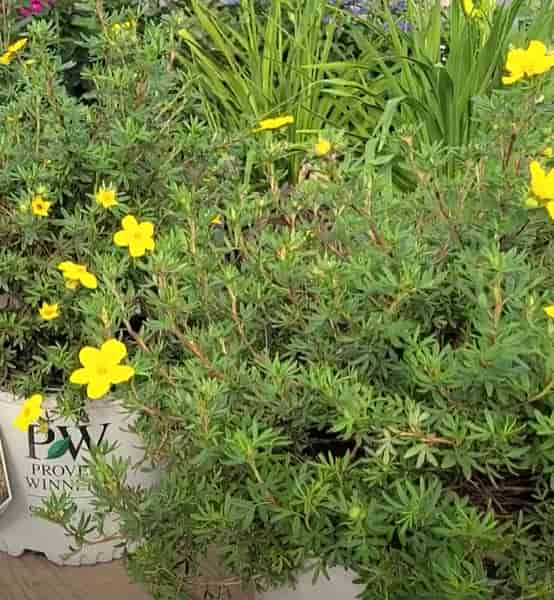
Specifications
- Family- Rosaceae
- Plant type- Herbaceous perennial or erect shrubs
- Plant height- 1.5 inches
- Leaves- palmately or pinnately compound
- Stem- green stem sometimes grass-like
- Flower- Yellow, white, red or pink.
- Fruit- barren strawberries
- Seed- Nut like seeds
- Blooming time- Late spring to autumn
- Propagation- By stem cutting
- Uses-
- Clean skin because of the presence of astringent
- Used in anti-wrinkle cosmetics
- Eaten raw or cooked
7. Purslane
Portulaca oleracea is known as little hogweed, parsley etc. You can find this species in North Africa, Europe, the Middle East and India subconsciously and all over the world. Around 40 cultivars are grown under this species. It is mainly considered vegetables or herbal plants. Its most important part is its taproot system which makes it resistant to strong wind.

Specifications
- Family- Portulacaceae
- Plant type- Annual succulent
- Plant height- 16 inches
- Leaves- Alternate or oppositely arranged leaves
- Stem- Smooth and reddish stem
- Flower- Yellow flowers
- Fruit- Pod or capsules
- Seed- Tiny seeds are produced inside the pods.
- Blooming time- At any time around the year
- Propagation- By stem cutting
- Uses-
- Eaten as leafy vegetables
- Can remove salt from saline conditions
8. Pachira Aquatica
Pachira aquatica, native to South America, has many local names like Malabar chestnut, saba nut, French peanut, provision tree, Guiana chestnut, pumpo etc. It has a specialty that it is sold as the name of a money plant.
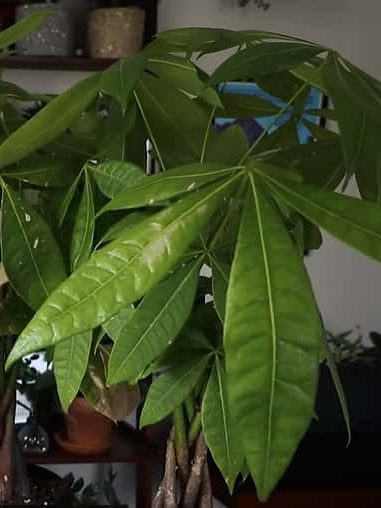
Specifications
- Family- Malvaceae
- Plant type- Tropical wetland tree
- Plant height- 18 meters (59.1 ft)
- Leaves- Palmately compound leaves with lanceolate leaflets which are green colored
- Stem- Brownish or greyish smooth bark
- Flower- Greenish yellow or cream-colored flower
- Fruit- Capsule
- Seed- Brownish seeds grow inside the fruit
- Blooming time-
- Propagation- By stem cutting
- Uses-
- used as timber
- Remedy for eye diseases
- Treat liver affections
Amazing Pothos varieties with pictures.
9. Lagundi (Vitex negundo)
Its common names are Chinese chaste tree, five-leaved chaste tree, horseshoe vitex, nisinda etc. It has its origin in South and Southeast Asia. Besides, it is widely cultivated in almost all the parts of Asia.
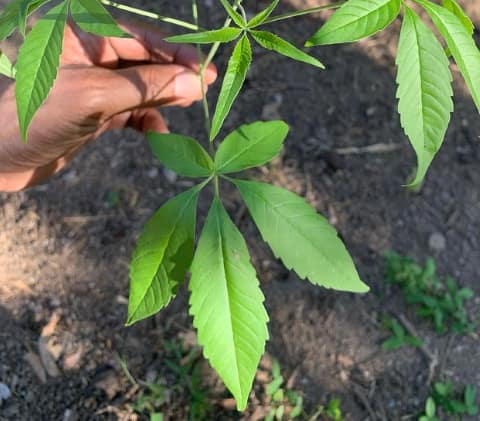
Specifications
- Family- Lamiaceae
- Plant type- Aromatic shrub
- Plant height- 2 to 8 meters
- Leaves- Palmately compound and digitate leaves
- Stem- Reddish brown
- Flower- Flowers are borne in panicles
- Fruit- Succulent drupe
- Seed-
- Blooming time-
- Propagation- By stem cutting
- Uses-
- Used in folk medicine
- Store garlic
- Treatment for women’s diseases.
10. Casimiroa edulis
Casimiroa edulis is a fruiting tree which is known as white sapote or Mexican Apple. It is found in a wide range in Eastern Mexico and Central America as it is native to Mexico.
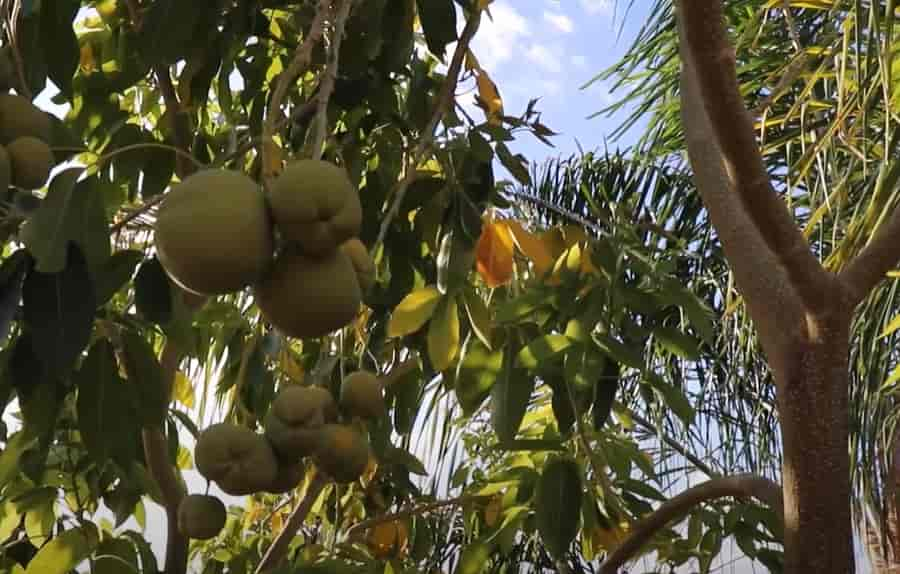
Specifications
- Family- Rutaceae
- Plant type- Tropical evergreen tree
- Plant height- 5 to 16 meters
- Leaves- alternate and Palmately compound whereas the leaflets are 6 to 13 cm long and 2.5 to 5 cm broad.
- Stem- Brownish barks
- Flower- Insignificant
- Fruit- Ovoid drupe which is 5 to 10 cm long
- Seed- Medium-sized and whitish seeds are produced inside the fruit.
- Blooming time- October to February
- Propagation- By stem cutting
- Uses-
- Highly nutritive fruit
- Reduce rheumatic pain
- Completes anti convulsive actions
11. Bombay plant
The Bombay tree, native to the Indian subcontinent and western Africa, is categorized under the bombax genus. It is also called simal, silk cotton tree, kapok, red cotton tree etc. in various localities. The best species of this genus is Bombax ceiba.
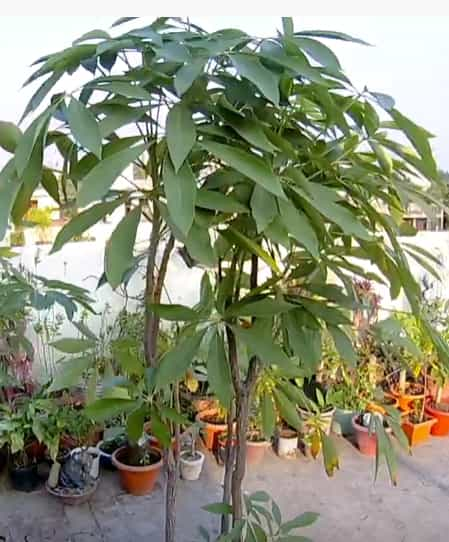
The bombax plants are most well-known for their cotton extracting capacity. Cotton is mainly produced from its seeds which are used for various purposes.
Specifications
- Family- Malvaceae
- Plant type- Deciduous and perennial tropical tree
- Plant height- 30-40 meters
- Leaves- Compound with entire margins
- Stem- Brownish
- Flower- Long red flowers
- Fruit- Husk
- Seed- Seeds are covered by a fiber inside the fruit
- Blooming time- January to March
- Propagation- By stem cutting
- Uses-
- Used as food plants by Lepidoptera larvas.
- Shedding trees
- Cotton is collected from these plants.
12. Alstonia Angustifolia
Native to Singapore, this tree is commonly found in Vietnam, Indonesia, the Philippines and Malaysia. It is also called Alstonia latifolia or Alstonia beccarii. Its local name is hard alstonia or red-leaved pulai. To get more information about this plant, you have to look here.
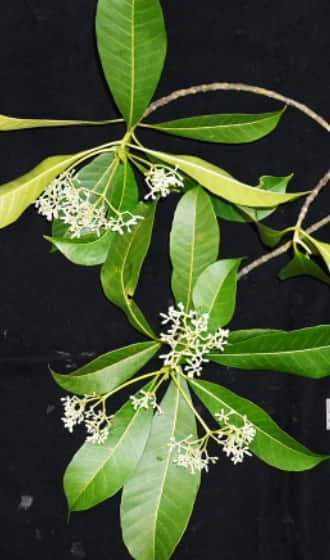
Specifications
- Family- Apocynaceae
- Plant type- Perennial, terrestrial, tropical and autotrophic plant
- Plant height- 15 meters
- Leaves- 5 whorled green leaves
- Stem- Smooth and greyish or brownish stem
- Flower- Flowers include fragrances with white petals. These flowers are arranged in an inflorescence.
- Fruit- Follicle or dehiscent type
- Seed- Produced inside the fruit
- Propagation- By stem cutting
- Uses-
- Used to relieve headache
- Used for treating fever
- Provides timber
Final Thoughts
Finally, we are at the endpoint of our discussion. The above-mentioned tree species may have different characteristics. But they are accumulated in a list because of their foliage. To get a different look at trees, these are the notable collections. Besides, you should undoubtedly judge their medicinal values.
Before wrapping up, we will suggest you choose any one of the trees and bring it to your home right now. You may get your room corner well-decorated with a new version of trees.



